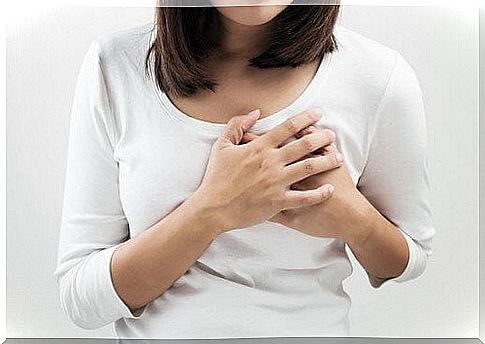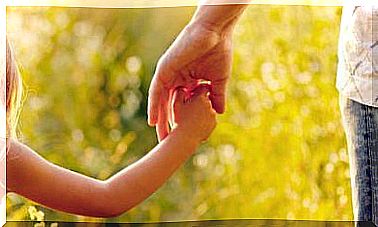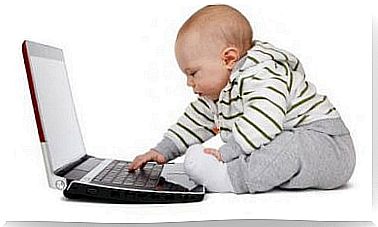Mastitis: Causes, Symptoms And Treatment

While breastfeeding, a woman may suddenly feel a swelling in one of the milk ducts. Later, he feels a certain discomfort, similar to the flu. These symptoms point to a possible case of mastitis.
Mastitis is nothing more than a harmless nuisance that affects many women. One in twenty women suffer from this condition while breastfeeding. But what exactly is mastitis?
What is mastitis?
This is a breast infection that commonly affects women who are breastfeeding. This condition occurs because one of the milk ducts becomes blocked, which prevents the normal flow of milk. This, in turn, triggers a series of ailments that eventually allow the presence of an infectious process to be detected.
Most common causes
After obstruction of the milk duct (milk stasis), another cause of mastitis is represented by nipple fissures. These small wounds, often unavoidable when breastfeeding the baby, are the ideal place through which bacteria invade the breast tissue.
Bacteria enter the body through these skin wounds and thus aggravate the infection. To avoid this, the woman must learn to prevent injuries and empty her breasts correctly.
But this leads us to the next question: Can non-breastfeeding women suffer from this annoying infection? The answer is yes.

What Happens When Mothers Are Not Breastfeeding?
Women who do not breastfeed their children have more breast complications because milk storage is usually excessive. When the accumulation of milk lasts over time, it can trigger an infection.
It is therefore very important that women empty their breasts correctly and continuously so as to avoid unnecessary accumulation of milk. However, this practice applies to both groups, namely women who are breastfeeding and women who are not breastfeeding.
As mentioned, mothers who breastfeed regularly also need to keep their milk flow under control. In addition to this, it must be considered that women with low immune defenses are much more prone to suffer from this condition.
Mastitis and common symptoms
Mastitis occurs in most cases with the following symptoms:
- Inflammation : this is an annoying and obvious swelling in one of the two breasts.
- General malaise : you feel fatigue, exhaustion and / or fever. The intensity of these symptoms will depend on the state of the body and the infection.
- Chills, tremors, and increased fatigue : These symptoms are associated with the most severe cases of mastitis.
As we can see, this is the symptomatology common to any minor infectious process that affects the human body. If you have a strong immune system, the infection will only last a few days, but if left untreated it can persist for weeks.

Treatment
Treating mastitis is very simple when it occurs in a mild or moderate form. It is common to take the following measures:
- Apply hot water compresses : they can considerably calm the pain in the breast affected by the inflammation. It is possible to resort to this solution during the first hours and days of the infectious process.
- If with the passing of the first few days the discomfort increases, the ideal is to contact a doctor who can prescribe the appropriate antibiotics and analgesics. Self-medication is not a viable option while breastfeeding.
Can you breastfeed with mastitis?
The answer is yes. Indeed, breastfeeding helps to eliminate mastitis because it allows the breasts to be emptied. By ensuring the flow of milk, it prevents the clogging of the same in the ducts and avoids any complications.
If the biting and sucking of the newborn cause a lot of pain, the woman can use devices to extract milk from the breast. These are devices designed to pull the liquid through direct application to the breast, and then pour it into the bottle or into a container.
After having completely emptied the breast, the woman can proceed with the use of the bottle to feed the baby without too many inconveniences. Mastitis actually affects the mother, not the baby. There is therefore no reason to fear infecting the newborn or that the child may suffer from other ailments.
Other interesting data
In addition to what has already been said, it will also be useful to keep in mind the following data on mastitis:
- It is very common especially in women who are pregnant before the age of thirty or still teenagers.
- It also occurs in women who give birth at 50 or even 60 years of age. The latter are considered extraordinary cases.
- This infectious process occurs more easily even during the first twelve weeks of breastfeeding. In this case we speak of post-partum mastitis.
Care should be taken if the infection progresses and medium-sized abscesses form. If so, it will be necessary to go to the doctor who will indicate the tests to be carried out to rule out the hypothesis of breast cancer or tumescence. Thankfully, mastitis has no cure. With good control and the right follow up, everything will return to normal.









